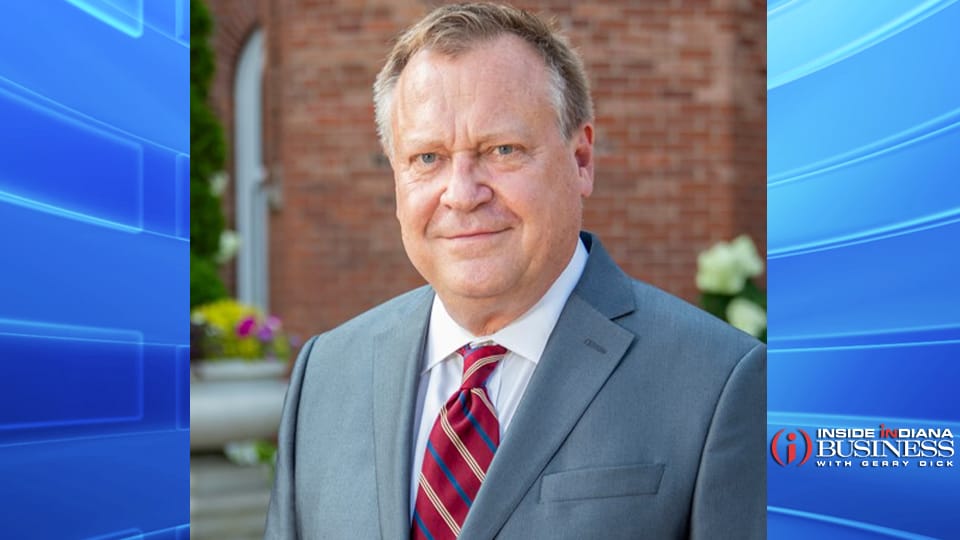Marsh Davis to retire as president of Indiana Landmarks
Subscriber Benefit
As a subscriber you can listen to articles at work, in the car, or while you work out. Subscribe Now
Marsh Davis, the longtime head of Indiana Landmarks, a not-for-profit that has helped preserve scores of historic buildings across the state, plans to retire in April 2025 after 19 years at the helm, the organization announced Thursday.
Davis, 66, has served as president of the Indianapolis-based preservation group since 2006. He also previously worked in other roles for 18 years, for a total of 37 years with the organization.
Some of Indiana Landmark’s top projects include preserving Bush Stadium in Indianapolis (now used as residential lofts), the Art Moderne Greyhound Bus Station in Evansville (now used as a restaurant) and the Reid Memorial Presbyterian Church in Richmond (now used as a community cultural center).
Even Indiana Landmarks’ headquarters is a preserved former Central Avenue Methodist Episcopal Church, with a theater-style sanctuary on two levels. The $24 million restoration project, in the city’s Old Northside Historic District, was completed in 2011 with support from the Cook Family of Bloomington and other donors. It now serves as a wedding, event and conference center.
Davis said he feels a connection with century-old buildings with an interesting past, and staunchly believes they should be preserved for future generations.
“I like the character they contain,” Davis told IBJ. “They usually are visually interesting, and the proportions are different than in modern houses. It reflects a different era, a different way of life, with less emphasis on the automobile or a lot of high technology.”
Indiana Landmarks said its board of directors is conducting a national search for Davis’ successor, with the help of an executive search firm.
“Marsh leaves behind a thriving, robust organization built on his thoughtful leadership,” said Doris Anne Sadler, the organization’s board chair, in written remarks. “He oversaw broad programmatic growth that expanded the reach and scope of historic preservation as a tool for community revitalization and engagement.”
Since it was founded in 1960, Indiana Landmarks has grown to become the nation’s largest statewide preservation organization, with more than 6,000 members and nine field offices throughout the state. The organization, with 46 full-time employees, has an annual operating budget of about $5.3 million.
Davis, who studied history as an undergraduate at Butler University, said he later became interested in a possible career in historic preservation, and earned a master’s degree in the field from Ball State University’s College of Architecture and Planning. In the process, he got an internship and graduate assistantship with Indiana Landmarks, then known as Historic Landmarks Foundation of Indiana.
He said discovering the joy of historic preservation opened new opportunities to him, which he had previously not realized.
“I didn’t have any training in old buildings,” he said. “I just liked them. I didn’t grow up in them. We always lived in suburban ranch houses.”
Davis first worked for Indiana Landmarks from 1984 to 2002 as a field surveyor and director of community services before moving to Texas to serve as executive director of the Galveston Historical Foundation.
In 2006, he returned to Indiana to serve as Indiana Landmarks’ president, succeeding Reid Williamson and Robert Braun to become only the third president in the organization’s history.
In keeping with his growing preservationist instinct, the same year he bought a three-story Prairie-style residence in the Meridian Kessler neighborhood that was built in 1909. He told IBJ in 2009 he jumped at the chance to buy the house when he learned it was for sale.
“It’s very distinctive because of its severe Prairie style, and I thought it was a great-looking house,” he said at the time. He and his family later filled it up with Mission-style furniture and period furnishings.
Under Davis’ leadership, Indiana Landmarks launched the Black Heritage Preservation Program in 2022, which focuses on saving and sustaining places that embody Indiana’s Black History. The program has distributed more than $300,000 in grants to 53 organizations in its first two years.
In a similar vein, Indiana Landmarks helped to establish the Lyles Station Historic Preservation Corp. in Princeton to save the 1919 Lyles Station School, one of the few historic buildings left representing the heritage of the last surviving Black farming community in Indiana.
“But for our work, that place would be gone,” Davis said.
He also set up Sacred Places Indiana, an unprecedented partnership between Indiana Landmarks and the national Partners for Sacred Places, to address the need of assisting religious congregations in preserving their historic places of worship. In 2022, Indiana Landmarks expanded the program through a $10 million grant from Lilly Endowment, which will allow the organization to distribute more than $8 million in planning and capital grants by early 2026.
“Under his watch, Indiana Landmarks has launched countless successful preservation initiatives large and small, ensuring that plans that tell the diverse stories of Indiana are available to future generations, said Randall Shepard, former chief justice of the Indiana Supreme Court and honorary chair of Indiana Landmarks, in written remarks.
Davis said his organization gets numerous requests for help in preserving old buildings and has to make difficult choices in the face of limited resources.
“There are thousands of places we look at” before getting involved with just some of them, he told IBJ. “It usually boils down to some level of local commitment and that the people really care about the place, and how they’re willing to work toward finding a solution.”
